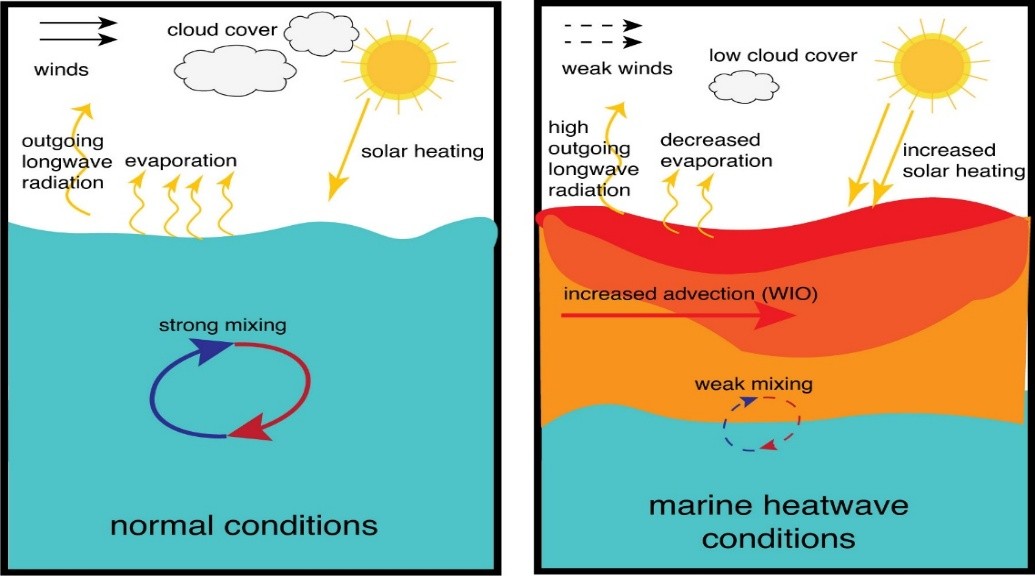PREVIOUS
Marine Heat Waves
August 5 , 2025
17 hrs 0 min
22
0
- In 2023, marine heat waves (MHWs) had covered 96 per cent of the global ocean surface.
- These events lasted four times longer than the historical average.
- The MHWs are extended periods of unusually high sea surface temperatures in specific ocean regions.
- The total heat activity in 2023 reached 53.6 billion degrees Celsius days per square kilometre.
- This was more than three standard deviations above the historical average since 1982.
- The North Atlantic saw the longest recorded MHW lasting 525 days starting mid-2022.
- The Tropical Eastern Pacific reached temperature peaks of 1.63 degrees Celsius during the El Niño onset.
- The Impacted regions included the North Atlantic, North Pacific, Tropical Eastern Pacific and Southwest Pacific, making up 90 per cent of ocean heating anomalies.
- These events led to coral bleaching, mass sea life migration, damaged food webs and a decline in key fisheries like Pacific cod.

Leave a Reply
Your Comment is awaiting moderation.


